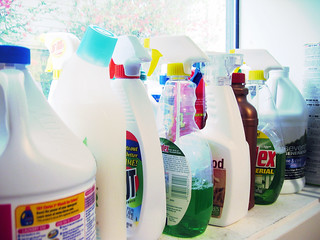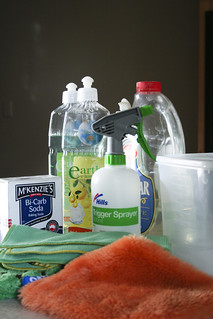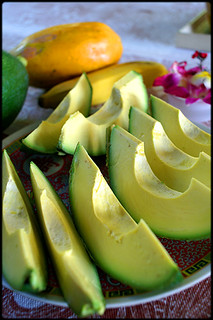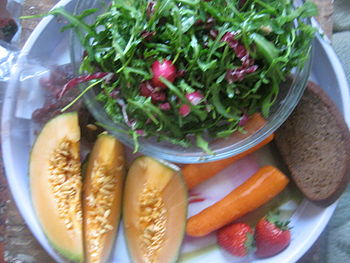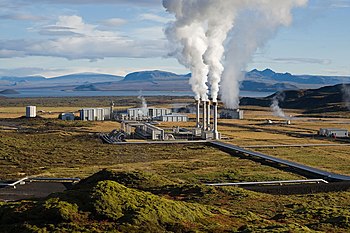We wish you and yours a nice holiday, and offer up thanks to those who have served our country!
We will be on vacation this week, so will not be posting on our regular schedule.
Be sure to check back next week for some helpful tips on safe and healthy detox methods that will keep all of your systems clean and naturally healthy!
Have a happy holiday, and a healthy, safe, green week!
Rose.
An informational blog offering helpful ways to reduce your toxic load and live greener, as part of our new holistic living blog network.
Monday, May 26, 2014
Thursday, May 22, 2014
Safe & Natural Carpet Cleaning Tips
You’re constantly on it with and without shoes. Your kids and young family members sit on it, roll around on it and play on it. Your pets sleep on it, they chase toys on it and beg for treats on it. You might be aware of all the activities that your carpet does handle. But you might be surprised at what hides in your carpet where you can’t see what’s going on.
You can see surface stains (and you get those up right away), but there are things in your carpet and living on the padding beneath it that you probably don’t want to know about - but you do know that you want your carpet to be clean.
To test how clean and safe your carpet is, vacuum it once with a regular vacuum cleaner and look at the amount of debris that gets vacuumed up. Then go over it again with a vacuum cleaner designed with eco-friendly living in mind and see how much more debris is pulled up. That’s the stuff that you can’t see.
Now go over the floor again with an organic cleaner and see how dirty the water looks. That’s because no matter how many times you vacuum your carpet, no matter how powerful the vacuum, in order to stay truly clean, a carpet has to be cleaned with organic options in mind.
Using commercial cleaners to clean your carpet isn’t safe for you so you’re going to want to use natural methods. First, make sure you have a regularly scheduled vacuuming routine.
Always clean up any spills the moment they happen. You can use salt to absorb a spill, which is a natural way to keep a spill from becoming a stain. Use a damp (not wet) cloth to lighten stains like a wine spill, and then treat it with an organic stain remover.
Don’t use commercial cleaners to steam clean your carpet because the chemicals used are bad for the carpet and bad for your home - and bad for your family. Plus, by using steam cleaners, you run the risk of leaving the carpet padding wet, which can encourage the growth of natural toxins like mold and mildew.
Pets, especially cats, tend to leave a home and carpet smelling like you have pets - so use baking soda on the carpet to absorb any odors - then vacuum it up. You can also buy an organic formula just for pet stains and odors that are safer for pets than using baking soda - some animals have sensitive skin that may be irritated by baking soda.
Choose a system to clean your carpets by getting a cleaning machine that has a low moisture option. By having a machine with a low moisture control, you won’t over soak the padding beneath the carpet and cause mold or mildew.
Use organic carpet cleaners that specifically state they’re for high traffic areas if that’s the carpet area you need cleaned, and make sure it states that it’s safe around pets. Some people prefer to save the expense of a carpet cleaning machine and use elbow grease instead!
Homemade carpet cleaning recipes can be as simple as a vinegar and water solution, so look for one that appeases you and start a routine that allows you to safely maintain clean and healthy carpets in your home.
Try These Natural Carpet Cleaning Products:






You can see surface stains (and you get those up right away), but there are things in your carpet and living on the padding beneath it that you probably don’t want to know about - but you do know that you want your carpet to be clean.
| (Photo credit: Queen Of Light and Joy) |
Now go over the floor again with an organic cleaner and see how dirty the water looks. That’s because no matter how many times you vacuum your carpet, no matter how powerful the vacuum, in order to stay truly clean, a carpet has to be cleaned with organic options in mind.
Using commercial cleaners to clean your carpet isn’t safe for you so you’re going to want to use natural methods. First, make sure you have a regularly scheduled vacuuming routine.
Always clean up any spills the moment they happen. You can use salt to absorb a spill, which is a natural way to keep a spill from becoming a stain. Use a damp (not wet) cloth to lighten stains like a wine spill, and then treat it with an organic stain remover.
Don’t use commercial cleaners to steam clean your carpet because the chemicals used are bad for the carpet and bad for your home - and bad for your family. Plus, by using steam cleaners, you run the risk of leaving the carpet padding wet, which can encourage the growth of natural toxins like mold and mildew.
Pets, especially cats, tend to leave a home and carpet smelling like you have pets - so use baking soda on the carpet to absorb any odors - then vacuum it up. You can also buy an organic formula just for pet stains and odors that are safer for pets than using baking soda - some animals have sensitive skin that may be irritated by baking soda.
| (Photo credit: eddie.welker) |
Use organic carpet cleaners that specifically state they’re for high traffic areas if that’s the carpet area you need cleaned, and make sure it states that it’s safe around pets. Some people prefer to save the expense of a carpet cleaning machine and use elbow grease instead!
Homemade carpet cleaning recipes can be as simple as a vinegar and water solution, so look for one that appeases you and start a routine that allows you to safely maintain clean and healthy carpets in your home.
Try These Natural Carpet Cleaning Products:



Tuesday, May 20, 2014
Choosing Safer Cleaning Methods for Your Home
If you check out the cleaning supplies aisle in any grocery store, you’ll see that the shelves are filled with products designed for every cleaning purpose under the sun. From cleaning the floor to polishing the furniture to doing the laundry, you can find something intended for every job.
But the chemicals in these products carry labels warning of everything from harmful vapors, to skin irritants and more. It’s a fact that cleaners with chemicals in them are dangerous to you and your family’s well being, by releasing their fumes and toxins into your home.
You can smell the scent of these chemicals in the air immediately upon entering the cleaning aisle - even though they are all still in sealed containers - and after you’ve used them in your home. When you clean your baby or toddler’s high chair tray or his toys with a chemical cleaner, those toxins are there where he eats and on the toys he sticks in his mouth.
However, there are effective, safer alternatives to dangerous chemical-laced products. You can use organic, natural products and have a home that smells great, shines with cleanliness and is toxin-free.
Look for organic cleaners that are all-purpose cleaners so that you can use them in the kitchen and in the bathroom, too. If you have a baby or toddler at home and need to clean the toys or baby’s highchair, there are organic cleaners that are non-toxic, don’t have an odor and will get your child’s playthings clean.
You can get concentrated, organic cleaning products that can clean your home from top to bottom. These cleaners aren’t toxic, so they’re safer to use and they are also biodegradable. Plus, these organic cleaners aren’t tested on lab animals, either. Cleaners using Birch bark extract and relaxing scents not only clean your home but give it a fresh, natural clean smell, too.
You can even make some of these safer cleaning solutions for your home yourself, but if you’re like most of us, time isn’t something you have a lot of and you need the convenience of purchasing organic cleaners. For example, it’s easier and less expensive to buy organic toothpaste to clean any tarnished silver than it is to make your own silver cleaner.
The same goes for dish cleaning soap, you can buy an organic, non-toxic foaming dish soap that’s concentrated so it lasts and it’s safe to use on any dish as well as baby items. To wipe down kitchen counters, you can use a glass and surface cleaner that’s biodegradable.
There’s no end to the amount of safe and eco-friendly products you can use to get your home clean. You won’t have to sacrifice quality or appeal in the form of scents, either. Organic cleaners are no longer a rarity. They’re now mainstream because more people have learned about the dangers of chemicals in cleaning products, and are taking steps to protect their family and environment from pollutants.
You can find lots of suggestions for natural and safe household cleaning products on our website at: http://www.newholisticliving.com/recommended-products-for-detox--green-living.html
| House Of Horrors (Photo credit: BrittneyBush) |
You can smell the scent of these chemicals in the air immediately upon entering the cleaning aisle - even though they are all still in sealed containers - and after you’ve used them in your home. When you clean your baby or toddler’s high chair tray or his toys with a chemical cleaner, those toxins are there where he eats and on the toys he sticks in his mouth.
However, there are effective, safer alternatives to dangerous chemical-laced products. You can use organic, natural products and have a home that smells great, shines with cleanliness and is toxin-free.
Look for organic cleaners that are all-purpose cleaners so that you can use them in the kitchen and in the bathroom, too. If you have a baby or toddler at home and need to clean the toys or baby’s highchair, there are organic cleaners that are non-toxic, don’t have an odor and will get your child’s playthings clean.
| Cleaning (Photo credit: go_greener_oz) |
You can even make some of these safer cleaning solutions for your home yourself, but if you’re like most of us, time isn’t something you have a lot of and you need the convenience of purchasing organic cleaners. For example, it’s easier and less expensive to buy organic toothpaste to clean any tarnished silver than it is to make your own silver cleaner.
The same goes for dish cleaning soap, you can buy an organic, non-toxic foaming dish soap that’s concentrated so it lasts and it’s safe to use on any dish as well as baby items. To wipe down kitchen counters, you can use a glass and surface cleaner that’s biodegradable.
There’s no end to the amount of safe and eco-friendly products you can use to get your home clean. You won’t have to sacrifice quality or appeal in the form of scents, either. Organic cleaners are no longer a rarity. They’re now mainstream because more people have learned about the dangers of chemicals in cleaning products, and are taking steps to protect their family and environment from pollutants.
You can find lots of suggestions for natural and safe household cleaning products on our website at: http://www.newholisticliving.com/recommended-products-for-detox--green-living.html
Thursday, May 15, 2014
9 Healthy Cholesterol-Lowering Foods
If you are like many who have been diagnosed with high cholesterol*, you'd like to control the condition with diet before turning to medications. This is a wise approach. There are, in fact, quite a few foods that can help in this regard. Here is a list of some of them, and some suggestions of how to prepare them.
1. Oat bran - While it's not a magic bullet and has been the subject of a lot of hype, oat bran is a high-fiber food that helps lower cholesterol. Oat bran is not only high in fiber, but it also contains beta-glucans which are the keys to its cholesterol-lowering ability. Add it to cereals and homemade breads and muffins.
2. Barley - Another high-fiber food, barley is rich in beta-glucans as well. In fact, it has as much as three times the amount of beta-glucan as oat bran. Barley is great in soups and stews, and can also be cooked as a breakfast cereal.
3. Beans - Once again, the combination of high fiber and beta-glucans comes together, this time in the humble bean. Beans also contain lecithin, which is a cholesterol-lowering nutrient. Great in chili, stews, soups, and Mexican dishes.
4. Garlic and onion - It seems there are few conditions that garlic can't help. In Europe, garlic is "officially" approved as a treatment for high cholesterol. A clove of garlic a day is said to lower cholesterol by as much as 15 percent. Half an onion a day has a similar effect. Add it to just about anything for a flavor and health kick!
5. Sesame seeds - These tasty little seeds are not the only foods with phytosterols - all plant foods have phytosterols to some degree - but they are unusually high in these compounds. Phytosterols are absorbed into the blood, pushing cholesterol out of the way, so to speak. These can be added to baked goods, homemade crackers, and Asian dishes.
6. Lettuce - Also fairly high in phytosterols, leafy green lettuce is a good food for lowering cholesterol.
7. Avocado - Ironically, the high-fat avocado has been shown to help lower cholesterol. It is especially effective when combined with olive oil in the diet.
8. Carrots - Carrots are high in pectin, which is a source of fiber that is implicated in lowering cholesterol. Eat a carrot or two a day.
9. Apples -Apples are also high in pectin. An apple a day...as they say!
As you consider how to incorporate these foods into your diet, here are some suggestions.
Try a bean and barley soup flavored with lots of onion and garlic. Make oat bran muffins for breakfast, and incorporate oat bran into homemade breads. Sesame seeds can also be added to baked goods, and tahini, a sesame seed paste, is a good way to get a lot of this seed into your diet. Try a salad with lettuce, carrots, and avocado with an olive oil-based dressing.
* Note: These are good, healthy, whole foods, and eating them is a good thing. However, remember that high cholesterol is a symptom, not a disease! Cholesterol is produced by the body in an attempt to heal damage caused by inflammation, so if you have high cholesterol, something is wrong in your body, and you need to take steps to address the underlying issue - not just lower your cholesterol. Consult a doctor who is well-versed in natural health, and won't just prescribe a drug in order to mask the symptoms, but who will take the time to find out what is causing the high cholesterol issue, and help you take appropriate steps to help your body heal.
1. Oat bran - While it's not a magic bullet and has been the subject of a lot of hype, oat bran is a high-fiber food that helps lower cholesterol. Oat bran is not only high in fiber, but it also contains beta-glucans which are the keys to its cholesterol-lowering ability. Add it to cereals and homemade breads and muffins.
| Barley (Photo credit: Wikipedia) |
3. Beans - Once again, the combination of high fiber and beta-glucans comes together, this time in the humble bean. Beans also contain lecithin, which is a cholesterol-lowering nutrient. Great in chili, stews, soups, and Mexican dishes.
4. Garlic and onion - It seems there are few conditions that garlic can't help. In Europe, garlic is "officially" approved as a treatment for high cholesterol. A clove of garlic a day is said to lower cholesterol by as much as 15 percent. Half an onion a day has a similar effect. Add it to just about anything for a flavor and health kick!
5. Sesame seeds - These tasty little seeds are not the only foods with phytosterols - all plant foods have phytosterols to some degree - but they are unusually high in these compounds. Phytosterols are absorbed into the blood, pushing cholesterol out of the way, so to speak. These can be added to baked goods, homemade crackers, and Asian dishes.
6. Lettuce - Also fairly high in phytosterols, leafy green lettuce is a good food for lowering cholesterol.
| Avocados (Photo credit: barron) |
8. Carrots - Carrots are high in pectin, which is a source of fiber that is implicated in lowering cholesterol. Eat a carrot or two a day.
9. Apples -Apples are also high in pectin. An apple a day...as they say!
As you consider how to incorporate these foods into your diet, here are some suggestions.
Try a bean and barley soup flavored with lots of onion and garlic. Make oat bran muffins for breakfast, and incorporate oat bran into homemade breads. Sesame seeds can also be added to baked goods, and tahini, a sesame seed paste, is a good way to get a lot of this seed into your diet. Try a salad with lettuce, carrots, and avocado with an olive oil-based dressing.
* Note: These are good, healthy, whole foods, and eating them is a good thing. However, remember that high cholesterol is a symptom, not a disease! Cholesterol is produced by the body in an attempt to heal damage caused by inflammation, so if you have high cholesterol, something is wrong in your body, and you need to take steps to address the underlying issue - not just lower your cholesterol. Consult a doctor who is well-versed in natural health, and won't just prescribe a drug in order to mask the symptoms, but who will take the time to find out what is causing the high cholesterol issue, and help you take appropriate steps to help your body heal.
Labels:
Avocado,
Bran,
Cholesterol,
cholesterol-lowering foods,
Dietary fiber,
eating for health,
Food,
healthy foods,
natural cholesterol,
natural health,
natural remedies,
Olive oil,
Sesame,
super foods
Tuesday, May 13, 2014
5 Simple Tips for Eating Green & Healthy
So you're thinking about starting to eat cleaner and greener? Good for you. But are you worried that green foods are just not going to be enough to sustain you - or that you won't be able to find the right foods? Well, there's no need to worry. You can live on truly healthy and green foods without a problem. Give yourself two weeks of eating green to create the habit. Here are some ways to eat green that you might want to try...
1. Eat lots of greens.
Eating your spinach will make you strong to the finish as Popeye says! Vegetables do a body good and filling your plate with plenty of hardy vegetables is not only healthy for you, but it's also filling and will give you plenty of energy - positive energy that's good for your muscles and your bones. It's a great way to sustain a healthy body. A good rule of thumb, without trying to count servings, is that for every meal, 2/3 of your plate should be vegetables - primarily green ones. This is literally "eating green."
2. Follow a vegetarian diet.
This doesn't just mean no meat, though. You have to make good organic food choices if you're going to go vegetarian. For example, peanut butter seems like a great source of protein that your body is craving when you switch to a vegetarian diet, but it isn't going to help you in eating green. Some processed foods like peanut butter may contain toxins or man-made additives which are difficult for the body to digest. Eating vegetarian isn't necessarily healthier if you just switch to vegetarian processed foods.
3. Go temporarily vegan.
Take it one step further and don't just cut meat out of your diet, but also milk, dairy products, and seafood. With the use of growth hormones to raise the chickens and cows there's more of a risk of there being a negative effect on our bodies when we eat or drink products made from this stuff. It is possible that the hormone residues could disrupt our hormone balance. As with the caveats in going vegetarian, going vegan isn't healthy if you just switch to vegan processed foods! Be sure you are eating natural, whole foods, and skip the processed fake meat products and that sort of thing. Typically I recommend you go vegan only for a short period of time, so you don't become deficient in certain vitamins that are found only in animal foods, but it's a great way to cleanse and detox your body periodically. And if you do choose to eat meat (or animal products), be sure it is naturally/organically raised! These are the ONLY animal products that are truly safe to eat.
4. Eat healthy home cooked meals.
If you're not prepared to go full on vegetarian or vegan, that's okay. Preparing meals at home from scratch has all too often become a thing of the past. Convenience foods (aka junk foods) have taken their place, or eating out. If you prepare your meals at home from scratch then you can control more of what you put into your body. Not only that, but when you eat at home and cook from scratch you will save on energy and package waste. That makes it good for the environment and good for you too, since you can monitor how much sugar and salt is being put on your food. Visit our Cooking From Scratch blog for weekly recipe ideas and healthy cooking tips!
5. Eat super foods that sustain you.
You don't need to eat junk foods when you have a craving. There are some really tasty foods that have the added bonus of being good for you, too. Snack on a piece of dark chocolate instead of a Hershey bar, or an apple and a slice of cheese instead of greasy salty potato chips. Some other must-haves in the super food list include nuts, granola, dried fruit, yogurt, and even kale chips. Or try signing up for a service like NatureBox, which provides you with a selection of naturally healthy snacks every month, so you never have to succumb to temptation in the snack aisle!
All in all, eating green means reducing the amount of processed foods you eat, and meat as well. Less red meat and more green veggies makes for a green diet that will sustain you and which can help you lose weight, too. You'll feel better and more energized as your body is more capable of metabolizing non-processed foods.

1. Eat lots of greens.
| (Photo credit: Wikipedia) |
2. Follow a vegetarian diet.
This doesn't just mean no meat, though. You have to make good organic food choices if you're going to go vegetarian. For example, peanut butter seems like a great source of protein that your body is craving when you switch to a vegetarian diet, but it isn't going to help you in eating green. Some processed foods like peanut butter may contain toxins or man-made additives which are difficult for the body to digest. Eating vegetarian isn't necessarily healthier if you just switch to vegetarian processed foods.
3. Go temporarily vegan.
Take it one step further and don't just cut meat out of your diet, but also milk, dairy products, and seafood. With the use of growth hormones to raise the chickens and cows there's more of a risk of there being a negative effect on our bodies when we eat or drink products made from this stuff. It is possible that the hormone residues could disrupt our hormone balance. As with the caveats in going vegetarian, going vegan isn't healthy if you just switch to vegan processed foods! Be sure you are eating natural, whole foods, and skip the processed fake meat products and that sort of thing. Typically I recommend you go vegan only for a short period of time, so you don't become deficient in certain vitamins that are found only in animal foods, but it's a great way to cleanse and detox your body periodically. And if you do choose to eat meat (or animal products), be sure it is naturally/organically raised! These are the ONLY animal products that are truly safe to eat.
| Home cooked food! (Photo credit: Kai Hendry) |
If you're not prepared to go full on vegetarian or vegan, that's okay. Preparing meals at home from scratch has all too often become a thing of the past. Convenience foods (aka junk foods) have taken their place, or eating out. If you prepare your meals at home from scratch then you can control more of what you put into your body. Not only that, but when you eat at home and cook from scratch you will save on energy and package waste. That makes it good for the environment and good for you too, since you can monitor how much sugar and salt is being put on your food. Visit our Cooking From Scratch blog for weekly recipe ideas and healthy cooking tips!
5. Eat super foods that sustain you.
You don't need to eat junk foods when you have a craving. There are some really tasty foods that have the added bonus of being good for you, too. Snack on a piece of dark chocolate instead of a Hershey bar, or an apple and a slice of cheese instead of greasy salty potato chips. Some other must-haves in the super food list include nuts, granola, dried fruit, yogurt, and even kale chips. Or try signing up for a service like NatureBox, which provides you with a selection of naturally healthy snacks every month, so you never have to succumb to temptation in the snack aisle!
All in all, eating green means reducing the amount of processed foods you eat, and meat as well. Less red meat and more green veggies makes for a green diet that will sustain you and which can help you lose weight, too. You'll feel better and more energized as your body is more capable of metabolizing non-processed foods.

Labels:
Convenience food,
eating green,
eating healthy,
eating organic,
Food,
Health,
healthy food,
Meat,
NatureBox,
Veganism,
Vegetarianism
Thursday, May 8, 2014
Renewable Fuels for Alternative Energy
There has been a lot of talk about alternative and renewable sources of energy over the past decade, but some countries are further ahead in this area than others. The Germans have really taken the lead when it comes to renewable fuel sources, and have become one of the major players in the alternative energy game. Under the aegis of the nation's electricity feed laws, the German people set a world record in 2006 by investing over $10 billion (US) in research, development, and implementation of wind turbines, biogas power plants, and solar collection cells.
Germany's “feed laws” permit German homeowners to connect to an electrical grid through some source of renewable energy and then sell back to the power company any excess energy produced at retail prices. This economic incentive has catapulted Germany into the number-one position among all nations with regards to the number of operational solar arrays, biogas plants, and wind turbines. The 50-terawatt hours of electricity produced by these renewable energy sources account for 10% of all of Germany's energy production per year. In 2006 alone, Germany installed 100,000 solar energy collection systems!
In the US, the BP corporation has established an Energy Biosciences Institute (EBI) to spearhead extensive new research and development efforts into clean burning renewable energy sources, most prominently biofuels for ground vehicles. BP's investment comes to $50 million (US) per year over the course of the next decade. This EBI will be physically located at the University of Illinois Urbana-Champaign. The University is in partnership with BP, and it will be responsible for research and development of new biofuel crops, biofuel-delivering agricultural systems, and machines to produce renewable fuels in liquid form for automobile consumption. The University will especially spearhead efforts in the field of genetic engineering with regard to creating the more advanced biofuel crops. The EBI will additionally have as a major focal point technological innovations for converting heavy hydrocarbons into pollution-free and highly efficient fuels.
Also in the US, the battle rages on between Congress and the Geothermal Energy Association (GEA). Recent studies by the National Research Council, the Western Governors' Association Clean Energy Task Force and the Massachusetts Institute of Technology all support expanding geothermal research funding to develop the technology necessary to utilize this vast, untapped domestic renewable energy resource.
Supporters of geothermal energy, such as this writer, are amazed at the minuscule amount of awareness that the public has about the huge benefits that research and development of this renewable alternative energy source would provide the US, both practically and economically. Geothermal energy is already less expensive to produce in terms of kilowatt-hours than the coal that the US keeps mining. Geothermal energy is readily available, sitting just a few miles below our feet and easily accessible through drilling.
One company, Ormat, which is the third largest geothermal energy producer in the US and has plants in several different nations, is already a billion-dollar-per-year business—geothermal energy is certainly economically viable, and hopefully will eventually become a mainstream source of energy production for our country and others.
Germany's “feed laws” permit German homeowners to connect to an electrical grid through some source of renewable energy and then sell back to the power company any excess energy produced at retail prices. This economic incentive has catapulted Germany into the number-one position among all nations with regards to the number of operational solar arrays, biogas plants, and wind turbines. The 50-terawatt hours of electricity produced by these renewable energy sources account for 10% of all of Germany's energy production per year. In 2006 alone, Germany installed 100,000 solar energy collection systems!
| The Nesjavellir Geothermal Power Plant in Þingvellir, Iceland. (Photo credit: Wikipedia) |
Also in the US, the battle rages on between Congress and the Geothermal Energy Association (GEA). Recent studies by the National Research Council, the Western Governors' Association Clean Energy Task Force and the Massachusetts Institute of Technology all support expanding geothermal research funding to develop the technology necessary to utilize this vast, untapped domestic renewable energy resource.
Supporters of geothermal energy, such as this writer, are amazed at the minuscule amount of awareness that the public has about the huge benefits that research and development of this renewable alternative energy source would provide the US, both practically and economically. Geothermal energy is already less expensive to produce in terms of kilowatt-hours than the coal that the US keeps mining. Geothermal energy is readily available, sitting just a few miles below our feet and easily accessible through drilling.
One company, Ormat, which is the third largest geothermal energy producer in the US and has plants in several different nations, is already a billion-dollar-per-year business—geothermal energy is certainly economically viable, and hopefully will eventually become a mainstream source of energy production for our country and others.
Tuesday, May 6, 2014
Implementing Sustainable Business Practices
There's so much to think about when running a business. Switching over to green business practices might not seem like top priority, but you might want to consider it.
More and more people are taking an interest in things that are green. That also means they are choosing companies which follow sustainable business practices. Also, there are so many ways to save money when you are being more green. So if you're considering switching over to green business practices, here are some tips for how and why you should make the switch.
Prevent Air Pollution
By installing Energy Star qualified products you can help reduce the air pollution your company produces. By making your company more energy efficient, you will save money on energy bills while helping the environment. Energy efficient products use less energy and therefore emit less pollution into the air by using less fossil fuels.
Switch to Renewable Energy
Using fossil fuels is costly and bad for the environment. Look for ways to add solar panels, geothermal technology, wind, hydro energy, and biomass. There are incentives for using renewable energy sources through the government which can help “buy down” the cost of these kinds of upgrades.
If you're a small business who cannot afford to buy all of these environment-friendly products, then contact your energy companies. You can purchase green energy at a slightly higher cost. Don't forget, people might just buy your product just because you have taken more steps to be more green, so the added cost can potentially lead to more sales.
Reduce the Use of Paper
Giving electronic receipts over paper receipts for things will help use less paper and fewer trees. The energy used to produce paper is significant as well. So the less paper you use, the less energy is being drawn to produce said paper. Not to mention the energy used to harvest trees and transport them, and then ship the paper to you.
Aside from offering electronic receipts, you can also do double-sided printing. Use paper that has high recycled content. Recycle your paper as much as possible.
Reduce Waste
This can save you huge amounts of money by having smaller removal costs, as well as cost savings on raw materials, and it can make you more efficient, productive, and will improve your public image. To accomplish this, simply produce less waste. You can do this by:
* Exchanging, selling, or giving away unneeded goods
* Redesigning products to use less material
* Redesigning packaging
* Designing a packaging return program with your customers
* Reusing shipping/packing materials
* Developing a product take-back program
* Eliminating, reusing, or recycling cardboard
* Repairing broken furniture to extend its life instead of tossing and buying new
* Buying products made from recycled material
* Using and maintaining durable equipment and supplies
* Purchasing environmentally preferable products
* Not using catalogs or sending junk mail
* Finding ways to reuse products you no longer need or passing them along to someone else
* Recycling. Whenever possible recycle.
* Conserving water. Getting water to your building uses energy unless you have a well system. So to save here, make sure you repair broken pipes, use water efficient appliances, have controls that turn faucets off automatically, water efficient landscaping, install an energy efficient water heater, and insulate pipes.
Doing these things will save you and your business money in the long run, and in general will be good for business. As more and more people become interested in energy conservation, they will also seek out companies which have the same values.
More and more people are taking an interest in things that are green. That also means they are choosing companies which follow sustainable business practices. Also, there are so many ways to save money when you are being more green. So if you're considering switching over to green business practices, here are some tips for how and why you should make the switch.
Prevent Air Pollution
| Look for this logo when considering business appliances & materials. (Photo credit: Wikipedia) |
Switch to Renewable Energy
Using fossil fuels is costly and bad for the environment. Look for ways to add solar panels, geothermal technology, wind, hydro energy, and biomass. There are incentives for using renewable energy sources through the government which can help “buy down” the cost of these kinds of upgrades.
If you're a small business who cannot afford to buy all of these environment-friendly products, then contact your energy companies. You can purchase green energy at a slightly higher cost. Don't forget, people might just buy your product just because you have taken more steps to be more green, so the added cost can potentially lead to more sales.
Reduce the Use of Paper
Giving electronic receipts over paper receipts for things will help use less paper and fewer trees. The energy used to produce paper is significant as well. So the less paper you use, the less energy is being drawn to produce said paper. Not to mention the energy used to harvest trees and transport them, and then ship the paper to you.
Aside from offering electronic receipts, you can also do double-sided printing. Use paper that has high recycled content. Recycle your paper as much as possible.
| Graph originally published in 3rd International Congress on Energy Efficiency and Renewable Energy Sources Proceedings, 2007 paper: DETERMINING ENERGY SAVINGS USING UTILITY BILLS. (Photo credit: Wikipedia) |
This can save you huge amounts of money by having smaller removal costs, as well as cost savings on raw materials, and it can make you more efficient, productive, and will improve your public image. To accomplish this, simply produce less waste. You can do this by:
* Exchanging, selling, or giving away unneeded goods
* Redesigning products to use less material
* Redesigning packaging
* Designing a packaging return program with your customers
* Reusing shipping/packing materials
* Developing a product take-back program
* Eliminating, reusing, or recycling cardboard
* Repairing broken furniture to extend its life instead of tossing and buying new
* Buying products made from recycled material
* Using and maintaining durable equipment and supplies
* Purchasing environmentally preferable products
* Not using catalogs or sending junk mail
* Finding ways to reuse products you no longer need or passing them along to someone else
* Recycling. Whenever possible recycle.
* Conserving water. Getting water to your building uses energy unless you have a well system. So to save here, make sure you repair broken pipes, use water efficient appliances, have controls that turn faucets off automatically, water efficient landscaping, install an energy efficient water heater, and insulate pipes.
Doing these things will save you and your business money in the long run, and in general will be good for business. As more and more people become interested in energy conservation, they will also seek out companies which have the same values.
Thursday, May 1, 2014
Beware of Dangerous Chemicals In Candies
If you can recall back to Halloween 2008, there was a big scare with candy coins. The candy was tainted with melamine, a carcinogen and a toxic substance when ingested. The media alerted parents around the world and the candy was recalled but not until after several children had become ill.
Melamine is known to cause kidney and bladder complications, particularly when it is combined with other chemicals, and it has been associated with causing cancer. According to the Centers for Disease Control, "Melamine is a synthetic chemical with a variety of industrial uses including the production of resins and foams, cleaning products, fertilizers and pesticides. It does not occur naturally in food."
Following the Melamine candy recalls, other candy manufacturers had to do the same thing including Cadbury, Nestle, and Mars as well as many other smaller candy manufacturers. Couple that with the fact that many candy wrappers are made from materials which contain PFCs, suspected carcinogens, and parents would be wise to pay close attention to the candy their children are consuming.
In Addition to Melamine and PFCs
If those two chemicals aren’t enough to scare parents into monitoring children’s candy consumption, consider this:
Chewing gum often contains Propyl Gallate, Butylated hydroxyanisole (BHA), and butylated hydroxytoluene (BHT) food additives, which have been shown to cause cancer in laboratory studies.
You may think of sugar-free candy as being "healthier," but many sugar-free candies contain Aspartame (Equal, NutraSweet) and Acesulfame-K, which have been linked to brain tumors, thyroid cancer and leukemia in laboratory studies.
Finally, most candies contain some type of food coloring and Blue 1 and 2, Red 3 and Yellow 6 have all shown serious health side effects in laboratory studies.
Alternatives to Toxic Candy
Not all candy is toxic. Look for organic candies, candy which doesn’t contain any of the food additives, colorings and preservatives listed above, or home-made candy. Making your own candy at home can be fun - and the kids can enjoy helping - and then eating the results! In the meantime, know that many government officials are striving for safer standards, including measures to ban wrappers containing PFCs and stricter regulations on imported candy.
Additionally, if you have concerns you can visit the US Food and Drug Administration and the Department of Consumer Affairs to research candy recalls.
| (Photo credit: Wikipedia) |
Following the Melamine candy recalls, other candy manufacturers had to do the same thing including Cadbury, Nestle, and Mars as well as many other smaller candy manufacturers. Couple that with the fact that many candy wrappers are made from materials which contain PFCs, suspected carcinogens, and parents would be wise to pay close attention to the candy their children are consuming.
In Addition to Melamine and PFCs
If those two chemicals aren’t enough to scare parents into monitoring children’s candy consumption, consider this:
| Candies (Photo credit: Moyan_Brenn (back soon, sorry for not commenting)) |
You may think of sugar-free candy as being "healthier," but many sugar-free candies contain Aspartame (Equal, NutraSweet) and Acesulfame-K, which have been linked to brain tumors, thyroid cancer and leukemia in laboratory studies.
Finally, most candies contain some type of food coloring and Blue 1 and 2, Red 3 and Yellow 6 have all shown serious health side effects in laboratory studies.
Alternatives to Toxic Candy
Not all candy is toxic. Look for organic candies, candy which doesn’t contain any of the food additives, colorings and preservatives listed above, or home-made candy. Making your own candy at home can be fun - and the kids can enjoy helping - and then eating the results! In the meantime, know that many government officials are striving for safer standards, including measures to ban wrappers containing PFCs and stricter regulations on imported candy.
Additionally, if you have concerns you can visit the US Food and Drug Administration and the Department of Consumer Affairs to research candy recalls.
Subscribe to:
Comments (Atom)




